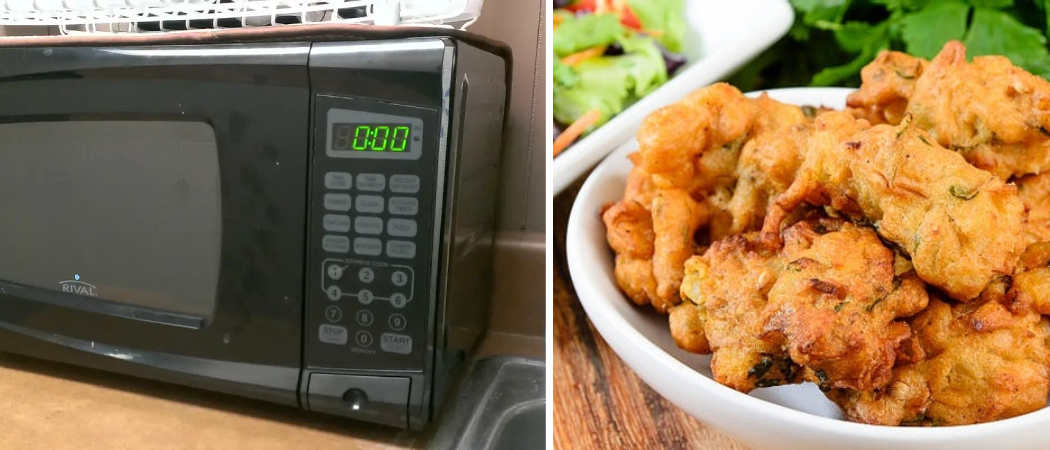Do you love the satisfying crunch of fresh, crispy food? Who doesn’t? Unfortunately, it can be hard to find a perfect crisp snack every time. But guess what – there’s an easy solution: your microwave! With just a few simple steps, you can get all that delicious crunchy goodness without leaving home or spending big bucks on expensive snacks.
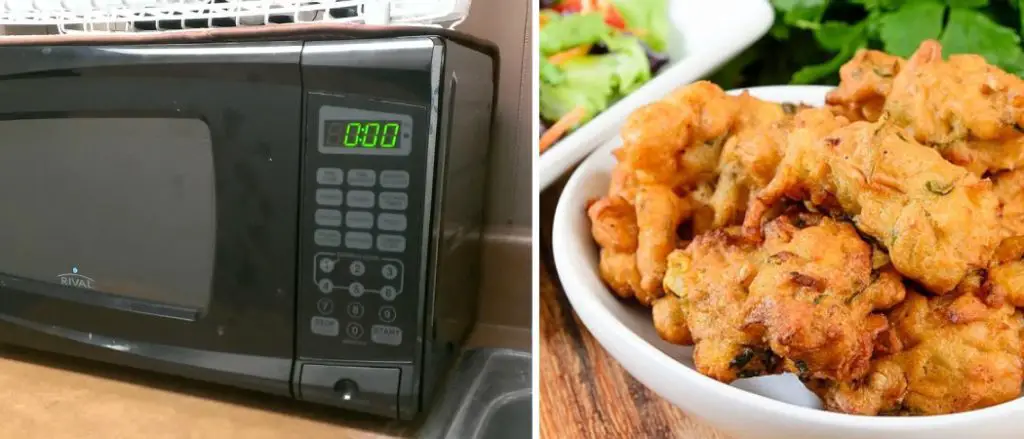
In this blog post, we’ll explore all the tips and tricks for getting amazing crispiness in your microwave that won’t make any sacrifices when it comes to taste. So don’t worry about missing out on those delightful crunchy treats ever again – let’s start learning how to make things crispy in the microwave.
Why Do You Need to Know How to Make Things Crispy in The Microwave
Knowing how to make things crispy in the microwave can be beneficial for several reasons:
1. Convenience:
The microwave is a commonly used kitchen appliance due to its speed and convenience. Being able to achieve crispy textures using the microwave opens up new possibilities for quick and easy meals or snacks.
2. Energy Efficiency:
Microwaves generally use less energy compared to traditional cooking methods like ovens or stovetops. By learning how to make things crispy in the microwave, you can save energy while still enjoying delicious, crispy dishes.
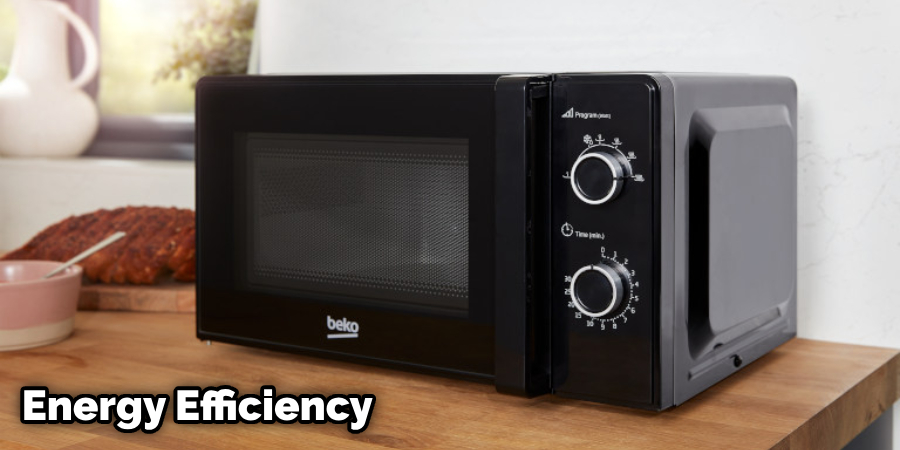
3. Versatility:
Knowing how to crisp foods in the microwave expands your culinary repertoire. You can experiment with a wide range of ingredients, from potatoes and bacon to tortilla chips and nuts. This versatility allows you to explore different flavors and textures without relying solely on traditional cooking methods.
4. Limited Kitchen Space:
Not everyone has access to a fully equipped kitchen or large cooking appliances. Microwaves are commonly found in small apartments, dorm rooms, or workplaces, making them a practical option for achieving crispy results when space is limited.
5. Dietary Preferences:
Crispy foods are often associated with deep-frying, which may not align with certain dietary preferences or health goals. Learning how to achieve crispiness in the microwave offers a healthier alternative, as it generally requires less oil or fat.
6. Crisping in a Pinch:
There may be situations where you want to enjoy crispy foods but don’t have access to a traditional oven or stovetop. Understanding microwave crisping techniques allows you to satisfy your cravings even in challenging circumstances.
Learning how to make things crispy in the microwave can enhance your cooking skills, provide more options for quick and convenient meals, and offer a healthier approach to achieving crispy textures in your favorite dishes.
Understanding the Science of Microwave Crisping
Achieving the perfect level of crispness in a microwave involves a combination of science and the right cooking techniques. By understanding the processes that occur, we can manipulate a microwave’s capacities to our advantage, creating that longed-for crunch.
The Role of Moisture Removal and Rapid Heating
The key to achieving a crispy texture in any food is removing moisture quickly and effectively. Microwaves heat food by producing electromagnetic waves that cause water molecules within the food to vibrate, generating heat. This rapid heating process expels moisture quickly, creating a crispy texture. However, this process can also unevenly distribute heat, leading to less desirable textures. Therefore, certain techniques and materials can aid in evenly distributing the heat, enhancing the crispiness.
Microwave-safe browning trays are often used to improve the crisping process. These trays become hot during microwaving, causing foods placed on them to brown or crisp, much like they would in a conventional oven. Similarly, using microwave-safe paper towels can prevent the food from sitting in its own expelled moisture, thus enhancing the crispness.
Debunking Common Microwave Crisping Misconceptions
- Myth: All foods can be crisped in the microwave: Not all foods are suitable for microwave crisping. Foods with a high water content, such as fruits and certain vegetables, are difficult to crisp due to their moisture levels.
- Myth: Covering food with a paper towel makes it crispy: While paper towels can absorb excess moisture and prevent splattering, they don’t necessarily make food crispy. For best results, food should be placed on a microwave-safe browning tray or a similar surface.
- Myth: Microwaving for longer periods makes food crispier: Over-microwaving can actually make food tough or rubbery rather than crispy. The key is to find the right balance of time and power level for each specific food type.
How to choose the Right food
When it comes to choosing the right foods for microwave crisping, there are a few key factors to consider. Here are some guidelines to help you select the best ingredients:
1. Moisture Content:
Foods with higher moisture content tend to be more challenging to crisp in the microwave. It’s important to choose ingredients that have a lower moisture content to achieve better results. Foods like potatoes, bacon, tortilla chips, and bread products generally work well for microwave crisping.
2. Texture:
Consider the desired texture of the final product. Some foods naturally lend themselves to crispy textures, such as potato chips or bacon. Look for ingredients that have a relatively firm or dry texture to begin with, as they are more likely to crisp up nicely in the microwave.
3. Thickness:
Thinner slices or pieces of food tend to crisp more evenly and quickly in the microwave. Thinly sliced potatoes or bacon, for example, will crisp up faster and more uniformly than thicker cuts. Keep this in mind when selecting ingredients for microwave crisping.
4. Single Layer:
It’s essential to arrange the food in a single layer when microwaving for crispiness. This allows the microwaves to distribute more evenly and helps prevent the food from steaming instead of crisping. Choose ingredients that can easily be arranged in a single layer to optimize the crisping process.
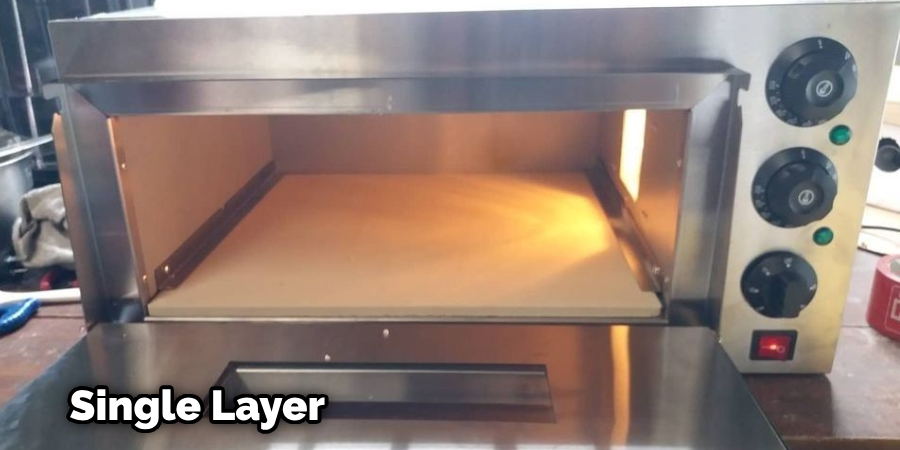
5. Experimentation:
Don’t be afraid to experiment! While certain foods are more commonly associated with microwave crisping, you can try different ingredients to discover new possibilities. Some vegetables, like kale or thinly sliced zucchini, can yield crispy results when microwaved correctly. Be open to trying new foods and adjusting techniques to find your own favorites.
Remember, not all foods are suitable for microwave crisping, especially those with high moisture content or delicate textures. It’s important to use your judgment and select ingredients that align with the principles mentioned above. Through experimentation and practice, you’ll develop a good sense of which foods work best for achieving that desired crispy texture in the microwave.
7 Step-By-Step Guides on How to Make Things Crispy in The Microwave
Step 1: Prepare the Food
Once you have chosen your ingredients, it’s time to prepare them for microwaving. Depending on the specific food, this may involve slicing or chopping into even-sized pieces and patting them down with a paper towel to remove any excess moisture.
Step 2: Arrange the Food on A Plate
Arrange the food in a single layer across a microwave-safe plate or dish—no overlapping. This will help ensure that all of the pieces are exposed to an even amount of microwaves and helps prevent steaming and uneven cooking. If you’re cooking multiple items at the same time, you can put them on separate plates.
Step 3: Cook in The Microwave
Place the plate in the microwave and set it to a high-power setting. The cooking time will depend on your particular ingredients and how crispy you want them. Generally speaking, start with shorter cooking times (1-2 minutes) and add more time as needed.
Step 4: Check the Progress
Carefully remove the plate from the microwave and check the progress of your ingredients. If they are not crispy enough, return them to the microwave for additional time.
Step 5: Remove Cooked Food from The Plate
Once you have achieved the desired crispness, remove the cooked food from the plate to prevent it from becoming soggy or overcooked.
Step 6: Remove Any Leftover Bits
If there are any leftover bits or pieces of food on the plate, carefully remove them to avoid burning. You can use a paper towel or spatula for this purpose.
Step 7: Enjoy!
Finally, enjoy your crispy treats with friends or family. Dipping sauces or savory seasonings make a great accompaniment to microwave-crisped foods. With a little practice and experimentation, you’ll be able to whip up delicious snacks in no time.
How to Avoid Common Mistakes While Making Things Crispy in The Microwave
1. Avoid Overcrowding:
It’s important not to overcrowd the plate or dish when microwaving for crispiness. This can lead to uneven cooking and steaming instead of crisping. For best results, arrange ingredients in a single layer with some space between them so that microwaves can reach all sides evenly.
2. Don’t Overcook:
Be careful not to overcook your food in the microwave-this can lead to it becoming dry and hard rather than crisp. Start with shorter cooking times and check periodically to ensure you don’t overcook.
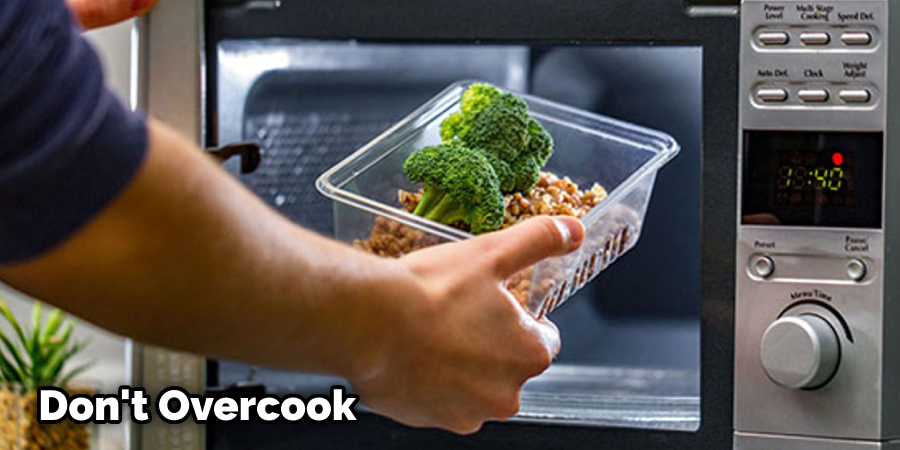
3. Use Care When Removing Hot Items:
The plate or dish may become very hot during microwaving, so use caution when removing it from the microwave. It’s best to use oven mitts or a kitchen towel for this purpose.
4. Cool Before Eating:
Let your food cool slightly before eating- this will help ensure that any remaining steam dissipates and the crispiness is preserved.
By following these simple tips and techniques, you can make delicious and perfectly crispy treats in the microwave with ease.
Hacks for Specific Food
Certainly! Here are some specific food hacks for achieving crispiness in the microwave:
1. Microwave Potato Chips:
– Thinly slice potatoes using a mandoline or a sharp knife.
– Rinse the slices to remove excess starch and pat them dry.
– Arrange the potato slices in a single layer on a microwave-safe plate.
– Lightly coat the slices with oil and sprinkle with salt or desired seasonings.
– Microwave in short bursts, flipping the chips and rotating the plate between each burst until they become crispy and golden brown.
2. Crispy Bacon:
– Place a microwave-safe plate lined with a few paper towels.
– Lay the bacon strips on the paper towels, ensuring they don’t overlap.
– Cover the bacon with another layer of paper towels to prevent splattering.
– Microwave on high for 1-2 minutes per slice, adjusting the time as needed based on your microwave’s power, until the bacon turns crispy and brown.
3. Toasted Nuts:
- Place nuts, such as almonds or cashews, in a microwave-safe bowl.
- Lightly coat the nuts with a small amount of oil or melted butter.
- Sprinkle with salt or your preferred seasonings.
- Microwave in 1-minute intervals, stirring in between, until the nuts turn golden and become crispy. Be cautious not to overcook them, as they can burn quickly.
4. Crispy Tortilla Chips:
- Cut corn tortillas into wedges or desired shapes.
- Arrange the tortilla pieces in a single layer on a microwave-safe plate.
- Lightly brush each piece with oil and sprinkle with salt or spices.
- Microwave for 1-2 minutes, frequently checking until the chips become crispy and lightly browned.
Remember, microwaves can vary in power, so it’s important to keep a close eye on the food while it’s cooking to prevent burning. Adjust cooking times and power levels as necessary based on your microwave’s capabilities. Additionally, don’t overcrowd the food on the plate to ensure even crisping.
Feel free to experiment with different seasonings and coatings to customize the flavor of your crispy microwave creations. Enjoy the delicious results!
Healthy Alternatives and Substitutions for Traditional Crispy Foods
If you’re looking for ways to enjoy crispy treats without the traditional fried or oven-baked methods, consider some healthier alternatives:
Alternative 1: Air Fryer Recipes:
Many air fryers have a setting dedicated to crisping food up quickly and easily with little or no added oil. Experiment with different recipes to find your favorite healthy and crunchy snacks.
Alternative 2: Roasted Vegetables:
Roasting is an easy and delicious way to get that crispy texture without deep frying. All you need is a few tablespoons of oil, some veggies, and your favorite seasonings. Place the vegetables on a baking sheet and roast in the oven until they are golden brown and crunchy.
Alternative 3: Baked Potato Chips:
If you’re craving crunchy chips, try making your own baked potato chips. Slice potatoes thinly and spread in a single layer on a baking sheet lined with parchment paper. Brush lightly with oil and bake in the oven until golden brown and crispy.
Alternative 4: Baked Plantains or Bananas:
Plantains and bananas are great alternatives to traditional crispy snacks. Slice them into thin rounds, brush with coconut oil or butter, and bake in the oven until golden brown. Serve with a sweet dipping sauce for an extra special treat.
Alternative 5: Baked Chickpeas:
Chickpeas are a fantastic source of protein and make a great crispy snack. Rinse and drain them, then spread in an even layer on a baking sheet. Sprinkle with your favorite seasonings (salt, pepper, garlic powder, etc.) and bake for 18-20 minutes until golden brown and crispy.
Alternative 6: Baked Polenta:
Polenta is a type of cornmeal that makes an excellent crispy snack. Spread cooked polenta in a thin layer on a baking sheet, sprinkle with seasonings, and bake at 425 degrees Fahrenheit for about 15 minutes until golden brown and crispy.
By utilizing these healthier alternatives and substitutions, you can still enjoy all the deliciousness of crispy snacks without the added fat and calories. Enjoy!
Tips for Cleaning Your Microwave
In order to keep your microwave in good working order, it should be cleaned regularly. Here are some tips for cleaning your microwave:
1. Wipe Down the Exterior:
Wipe down the exterior of the microwave with a damp cloth or paper towel to remove any dirt and grime.
2. Clean the Interior:
Mix a solution of one part vinegar and one part water in a microwave-safe bowl. Heat the mixture for two minutes, then let it sit for another two minutes before removing from the microwave. The steam will help loosen built-up food particles and make them easier to remove. Wipe down the interior of the microwave with a damp cloth or paper towel.
3. Clean the Door Seals:
Remove any food particles from the door seals by using a wet cloth or paper towel. This will help keep your microwave running smoothly and efficiently.
4. Deodorize Your Microwave:
To get rid of any lingering odors, fill a microwave-safe bowl with one cup of water and a few slices of lemon or lime. Heat the mixture for five minutes, then let it sit inside the microwave for another 10 minutes before wiping down the interior again. Repeat as needed.
Keeping your microwave clean is an important part of kitchen maintenance and will help ensure that your food is cooked properly. Following these tips will help you maintain a clean and healthy microwave for many years to come.
Microwave Crisping for Health-Conscious Individuals
Microwaving can be a remarkably healthy cooking method, especially for those who aim to maintain a nutritious diet while still enjoying the crispness of their food. Here are some tips and techniques to make your microwave cooking more health-conscious without compromising on the texture:
1. Reduce Oil Usage:
When aiming for that crisp texture in the microwave, it’s common to reach for oil. However, to keep your dishes healthier, try using a small amount of olive oil (rich in monounsaturated fats) compared to other types. A brush or spray can help evenly distribute the oil, ensuring a crispy finish without unnecessary calories.
2. Opt for Healthier Crisping Ingredients:
Choosing ingredients high in fiber and low in fat is an excellent way to create a healthier, crispy dish. Kale, apple slices, sweet potatoes, or chickpeas can all be cooked to a satisfying crisp in the microwave.
3. Use Microwave-Safe Crisping Tools:
Consider investing in a microwave crisper pan or tray. These tools are designed to distribute the heat evenly and help food crisp up without the need for added oil.
4. Leverage Spices:
Use a diverse range of spices to enhance flavor without resorting to unhealthy seasonings. Spices like paprika, turmeric, or cinnamon can add a fantastic burst of flavor to your microwave-crisped food.
5. Pay Attention to Microwave Settings:
To achieve that desirable crisp texture, it’s crucial to get familiar with your microwave’s power levels and cooking times. Remember to turn or stir food halfway through cooking to ensure even heat distribution.
By incorporating these strategies, you can enjoy your favorite crispy foods in a healthier way.
Microwave Crisping Safety Tips
Ensuring safety while using the microwave, especially for achieving crispiness, is paramount. Here are some invaluable tips to help you avoid common safety pitfalls:
1. Use Microwave-Safe Containers:
Avoid using containers made of metal or any material not labeled microwave-safe. These can cause sparks or even fires. Heat-resistant glass, ceramic containers, and microwave-safe plastics are suitable for microwave usage.
2. Beware of Hot Spots:
Microwaves often heat unevenly, leading to “hot spots” in food that can cause burns. Stir or rotate your food halfway through cooking for even heat distribution.
3. Avoid Using Foil:
While microwaving, never use foil or metal to achieve crispiness. These can cause a fire hazard.
4. Don’t Overheat Oil:
If you are using oil to crisp your food, be cautious not to overheat it. Overheated oil can lead to smoke or even fire.
5. Carefully Remove Food:
Food and containers can become very hot in the microwave. Always use oven mitts or a towel to remove items to prevent burns.
6. Never Leave Cooking Unattended:
Never leave food unattended while microwaving, especially when trying to achieve a crispy texture. Overcooking can quickly lead to smoke or fire.
By following these safety measures, you can enjoy your crispy microwave-cooked foods without any worries. Remember, safety should always come first in the kitchen.
Seasoning and Flavoring for Microwave-Crisped Foods
Enhancing the taste of your microwave-crisped foods with a variety of seasonings and flavorings can make your meals even more scrumptious. Here are some popular options to consider:
1. Herbs and Spices:
Herbs like rosemary, thyme, or oregano, and spices like paprika, cumin, or chili powder can add a flavorful punch to your crisped dishes. Remember to add these seasonings before microwaving to let the flavors infuse properly.
2. Homemade Spice Mixes:
Creating your own spice mixes enables you to control the flavor profile of your dishes. Combining turmeric, coriander, cayenne, and cinnamon can make a delightful spicy-sweet mix for sweet potato crisps.
3. Citrus Zest:
The zest of citrus fruits like lemon, lime, or orange can add a refreshing tanginess to your dishes. The citrus zest can be sprinkled on top of the food after it’s crisped.
4. Cheese:
A sprinkle of hard, strong-flavored cheese like Parmesan or Pecorino can melt slightly on your hot, crisped dishes, adding a deliciously savory note.
5. Vinegar or Citrus Juice:
A dash of vinegar, such as balsamic or apple cider, or a squeeze of fresh lime or lemon juice can be added after the food is crisped in the microwave for a burst of acidity.
6. Nutritional Yeast:
With its cheesy, nutty flavor profile, nutritional yeast is a great option for those who want a punch of flavor as well as added nutrients.
By experimenting with these seasonings and flavorings, you can elevate your microwave-crisped foods to new gastronomic heights while still keeping them healthy and enjoyable.
Microwave Crisping for Different Cuisines
Exploring microwave crisping methods can open up a new world of culinary delights, allowing you to add a crispy texture to dishes from various international cuisines. Here are some examples:
1. Italian Cuisine:
Italian cuisine often involves crispy components such as bruschetta or croutons. These can be made in the microwave by thinly slicing bread, lightly brushing with olive oil, and microwaving until crisp.
2. Mexican Cuisine:
For a healthier alternative to traditionally fried tortilla chips, take a corn tortilla, cut it into wedges, and microwave it until it reaches a crunchy consistency. These are perfect for nachos or as accompaniments to salsas and guacamole.
3. Indian Cuisine:
Papadums, thin, crisp discs served as an accompaniment to Indian meals, can be crisped up in the microwave without the need for deep-frying. Place the papadums in the microwave and cook until they are crisp.
4. Japanese Cuisine:
Toasted nori, used in sushi, can be made crispy in the microwave. Place a sheet of nori in the microwave for about 15-20 seconds. Monitor closely to prevent burning.
5. Greek Cuisine:
Pita bread, a staple in Greek cuisine, can be crisped up in the microwave and used for dishes like gyros or as a base for various toppings.
6. Middle Eastern Cuisine:
Falafels can be made crispy in the microwave. After preparing the falafel mixture, shape it into small balls or patties, lightly coat it with oil, and microwave until they achieve a crispy outer layer.
With a bit of creativity, anyone can use the microwave to add a crispy element to dishes from around the world, providing a healthier alternative to deep-frying.
Conclusion
Making things crispy in the microwave is a great way to enjoy your favorite snacks without having to heat up an oven or use extra oil. With just a few simple steps, you can enjoy crunchy and delicious food from the comfort of your own kitchen. To achieve perfect crispiness, make sure that you are using paper towels to absorb any excess moisture before microwaving.
Additionally, keep an eye on how long it takes for your snack to reach its desired level of crispness – as different foods require different amounts of time for them to turn out perfectly golden brown and crispy! Thanks for reading this article about how to make things crispy in the microwave.

